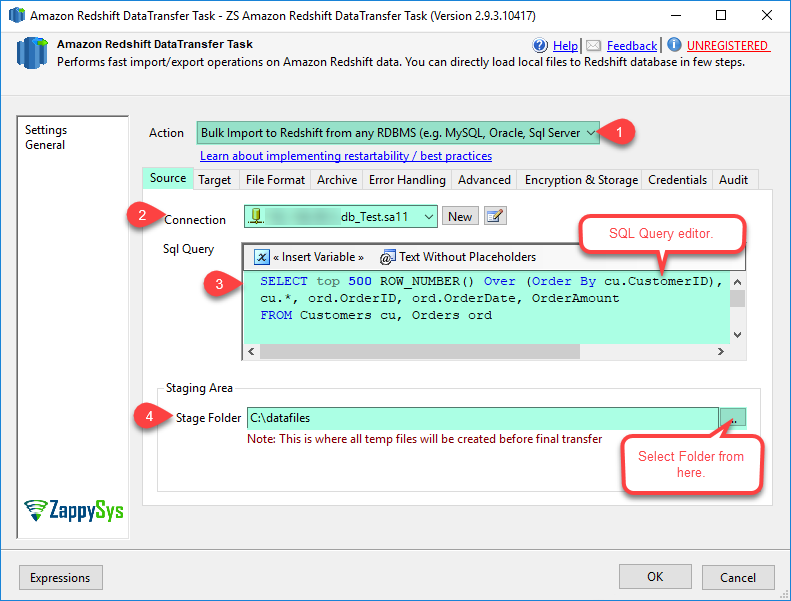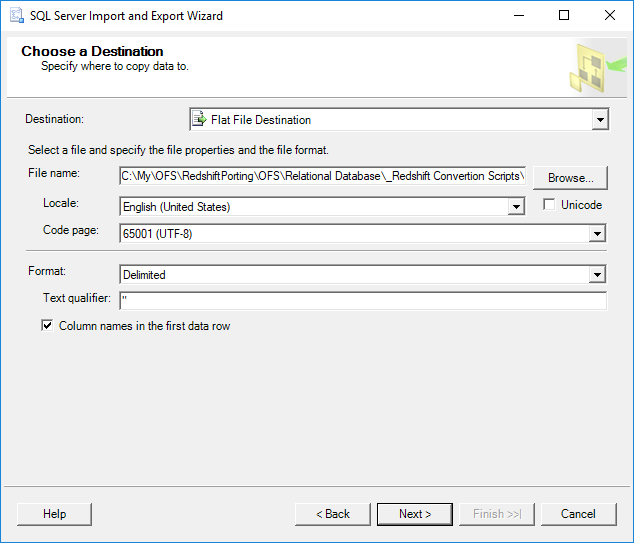
%s """ % (opt.to_table, fn, AWS_ACCESS_KEY_ID, AWS_SECRET_ACCESS_KEY,opt. sql="""ĬREDENTIALS 'aws_access_key_id=%s aws_secret_access_key=%s' Copy Command method (Dump and Load) Starting, a relatively easy way to ETL your MySQL data into Amazon Redshift is using the COPY command that loads dump flat files (CSV, JSON) into Redshift. Use psycopg2 COPY command to append data to Redshift table. Depending on your use case and resources, there are great choices to go to. K.set_contents_from_file(file_handle, cb=progress, num_cb=20, conn = nnect_s3(AWS_ACCESS_KEY_ID,AWS_SECRET_ACCESS_KEY) Method 2: Use Hevo Data a serverless ETL tool that allows you to organize, locate, move, and transform all your datasets across your business so that you can put them to use. Method 1: Use the Redshift COPY command you can use an SQL-like COPY command to load your data. P2 = Popen(loadConf, stdin=p1.stdout, stdout=PIPE,stderr=PIPE)Ĭompress and load data to S3 using boto Python module and multipart upload. 2 Easy Methods to Achieve Redshift Bulk Load. P1 = Popen(, stdout=PIPE,stderr=PIPE,env=env)

""" % (in_qry, limit, out_file, opt.mysql_col_delim,opt.mysql_quote) In my MySQL_To_Redshift_Loader I do the following:Įxtract data from MySQL into temp file. You can use Python/boto/psycopg2 combo to script your CSV load to Amazon Redshift. Or you can load directly from an Amazon DynamoDB table. You can load from data files on Amazon S3, Amazon EMR, or any remote host accessible through a Secure Shell (SSH) connection. For more information about transactions, see Serializable isolation.Anyway, if you can extract data from table to CSV file you have one more scripting option. The COPY command uses the Amazon Redshift massively parallel processing (MPP) architecture to read and load data in parallel from multiple data sources. You can't run GRANT (on an external resource) within a transaction block (BEGIN. Knex.js is a batteries included SQL query builder for PostgreSQL, CockroachDB, MSSQL, MySQL, MariaDB, SQLite3, Better-SQLite3, Oracle, and Amazon Redshift. For the list ofįor stored procedures, the only permission that you can grant is EXECUTE. You can only GRANT and REVOKE permissions to an AWS Identity and Access Management (IAM) role. When using ON EXTERNAL SCHEMA with AWS Lake Formation,

You can only GRANT or REVOKE USAGE permissions on an external schema to database usersĪnd user groups that use the ON SCHEMA syntax. For more information, see Amazon Redshift system-defined roles. Roles that you can also use to grant specific permissions to your users. For more information about the CREATE ROLE command, see CREATE ROLE. By defining roles andĪssigning roles to users, you can limit the the actions those users can take, such as limiting users to only the CREATE TABLE and You can also grant roles to manage database permissions and control what users can do relative to your data. SHARE are the only permissions that you can grant to users and user groups. To add database objects to or removeĭatabase objects from a datashare for a user or user group, use the ALTER permission.Ĭonsumers from a datashare, use the SHARE permission. Or remove objects or consumers from a datashare. Permissions also include access options such as being able to add objects or consumers to

#REDSHIFT COPY COMMAND MYSQL FULL#
The full workflow is: conn nnect (.) cur conn.cursor () cur.execute ('COPY.') mit () I don't believe that copyexpert () or any of the py commands. To revoke permissions from a database object, SQL Workbench defaults to auto-commit while psycopg2 defaults to opening a transaction, so the data won't be visible until you call commit () on your connection. Use this command to give specific permissions for a table,ĭatabase, schema, function, procedure, language, or column. Write data, create tables, and drop tables. Permissions include access options such as being able to read data in tables and views, Defines access permissions for a user or user group.


 0 kommentar(er)
0 kommentar(er)
